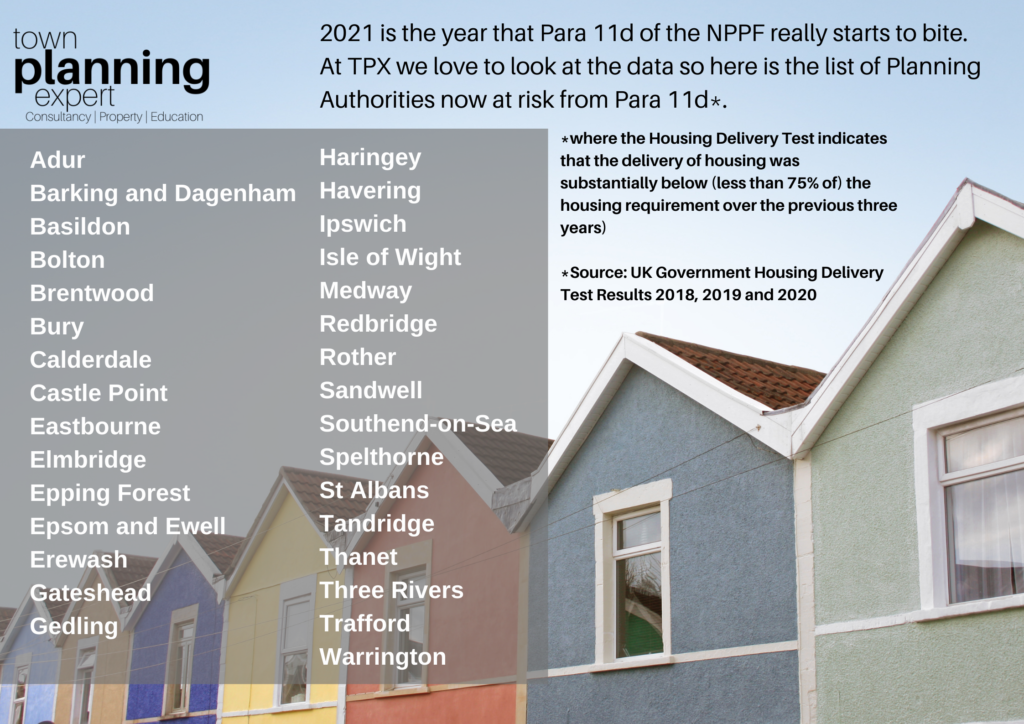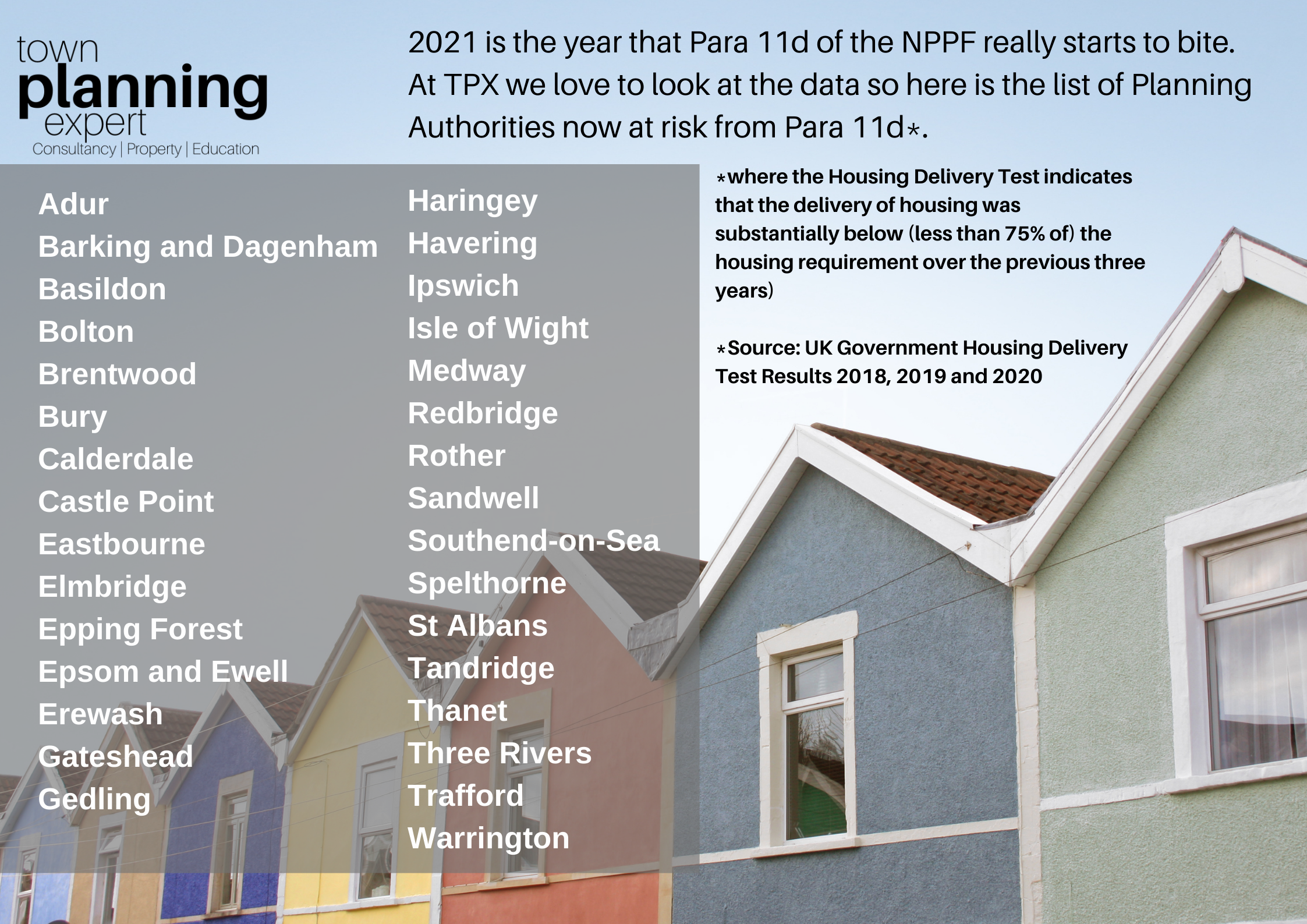
Para 11d of the NPPF describes the ’tilted balance’ test. The tilted balance was put into the NPPF in order to address planning authority performance for those authorities that could not or would not grant planning permission for housing lead development to meet their own objectively assessed needs.
It works like this.
Para 11d sets up the tilted ballance stating:
Plans and decisions should apply a presumption in favour of sustainable
development…d) where there are no relevant development plan policies, or the
https://assets.publishing.service.gov.uk/government/uploads/system/uploads/attachment_data/file/810197/NPPF_Feb_2019_revised.pdf
policies which are most important for determining the application are
out-of-date(7), granting permission unless:
i. the application of policies in this Framework that protect areas or
assets of particular importance provides a clear reason for
refusing the development proposed(6); or
ii. any adverse impacts of doing so would significantly and
demonstrably outweigh the benefits, when assessed against the
policies in this Framework taken as a whole.
What Para 11d does is render the Local Plan out of date if the triggers within sub-para (7) are met. This defaults all applications to a determination based on the policies within the NPPF alone and matters of normal planning material consideration within the balance of the planning assessment tiled or skewed in favour of approving sustainable development. For a reminder Sustainable development is defined at para 8 of the NPPF.
The triggers for the tilted balance are set out within sub-para (7) which states:
This includes, for applications involving the provision of housing, situations where the local planning authority cannot demonstrate a five year supply of deliverable housing sites (with the appropriate buffer, as
https://assets.publishing.service.gov.uk/government/uploads/system/uploads/attachment_data/file/810197/NPPF_Feb_2019_revised.pdf
set out in paragraph 73); or where the Housing Delivery Test indicates that the delivery of housing was substantially below (less than 75% of) the housing requirement over the previous three years.
This is an or tests not an and test meaning that only one of the triggers needs to be true. 2021 is a landmark year for this because we now have three clear years of housing delivery test results to analyse and it is from this we can derive the 31 planning authorities that have failed to deliver housing lead development to the requisite standard over the past 3 years.
For these authorities the tilted balance is engaged subject to the clear reason clause within sub-para (6) which helpfully lists the clear reason’s by which the tilted ballance would not be readilly engaged. These are:
The policies referred to are those in this Framework (rather than those in development plans) relating to:
habitats sites (and those sites listed in paragraph 176) and/or designated as Sites of Special Scientific Interest; land designated as Green Belt, Local Green Space, an Area of Outstanding Natural Beauty, a National Park (or within the Broads Authority) or defined as Heritage Coast; irreplaceable habitats; designated heritage assets (and other heritage assets of archaeological interest referred to in footnote 63); and areas at risk of flooding or coastal change.
https://assets.publishing.service.gov.uk/government/uploads/system/uploads/attachment_data/file/810197/NPPF_Feb_2019_revised.pdf
So for sites that are not hampered by the above (quite significant) constraints and within the area of control of the above named 31 Authorities the tiled balance will remain available until new HDT results are released in January 2022. Lets see if any of the named authorities can pull themselves out of the mire!


